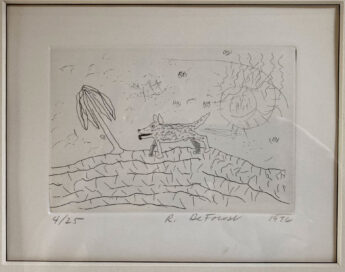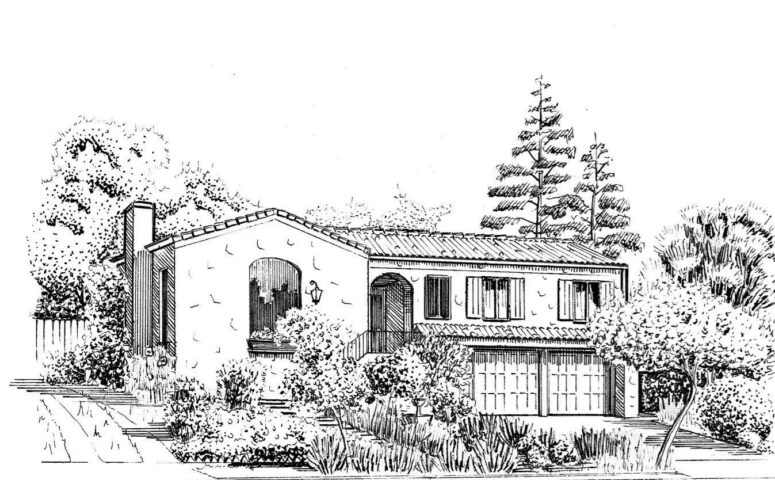Growing up, I saw only a few houses that really impacted me. Some were in magazines. Some were real. One small house–One Edgecroft Road–was both. The kitchen and deck renovation appeared in Sunset. But I didn’t know that until after I went to see my friend who lived there. We were friends from elementary school through high school. He was charming, good looking, and popular. His parents seemed like quintessential cool 1960s parents. His mother appeared in some article in a miniskirt, sporting heels that looked like ice cubes. His father reminded me of actor John Astin from the then popular Addams family. And their house! A frame for modern art, especially Funk art.
The house wasn’t large, a small Spanish Mediterranean bungalow full of treasures that seemed far out, really far out. The living room, a few steps down, contained an Eames chair, a Platner table, a piece of art by Richard Lindner, and, of all strange things, an obscene sculpture by Clayton Bailey on the hearth. When I first saw it, I didn’t even know what was happening. Eventually I think my friend’s mother donated it to UC Davis, where Bailey (and most of the cool artists of the era) taught. Not the kind of thing you would want your kid and his adolescent pals to see.’

courtesy Coldwell Banker
In the strangely colored foyer was a photo of Picasso and an abstract sculpture. To the right, off the entry, was a dining room with an enormous bowl featuring a topless ceramic woman emerging as if to lead the journey. Nearby was a Roy De Forest drawing that included a ship with childlike scribbles. Some years later, one of my first art purchases was a tiny Roy De Forest etching of a dog chasing a tree. Chasing bohemia. I didn’t remember a backyard, but rather a courtyard deck. This was a party house.


Roy De Forest | Drawing, 1972. Colored pencil, pastel, graph.
All I can remember of my friend’s bedroom was that by high school, he had a waterbed with an enormous faux fur bedspread that his mother had purchased at Britex. He also bought a motorcycle, which my father forbade me to ride. I only rode it a few times, and I had no idea where my hands were meant to go, so I held on to him. In the living room he played me a record his mother owned, “Bobby Short Loves Cole Porter.” There was another life out there that involved saloon singers and jazz. His mother also had a chic turquoise Peugeot with a sunroof. We went for a ride in nearby Tilden Park. My pal wasn’t yet sixteen. When his parents were out of town, he threw a big party. I put out a cigarette butt in a sterling silver bowl and tarnished it. I freaked out but a more level headed lady friend knew how to clean it. Later I tried a cigar. Probably threw up. All those memories can set you up for a grown-up lifetime.

Recently I went back to Kensington to find the house where Robert Oppenheimer once lived and to see the Blake Estate. One Edgecroft’s exterior was being painted. I figured it would be listed soon. Today I looked at all the photographs in the online listing, trying to recollect those movies in my head. House stagers remove all the curtains and blinds to let in light. Too much light, if you ask me. They also always take down all the interesting art. Staging a home is the perfect American artform all on its own. You see nothing but your own narrative. Even if it’s gone, it’s still there.

Clayton Bailey sculpture similar to the one on the hearth.
courtesy Rago Auctions
